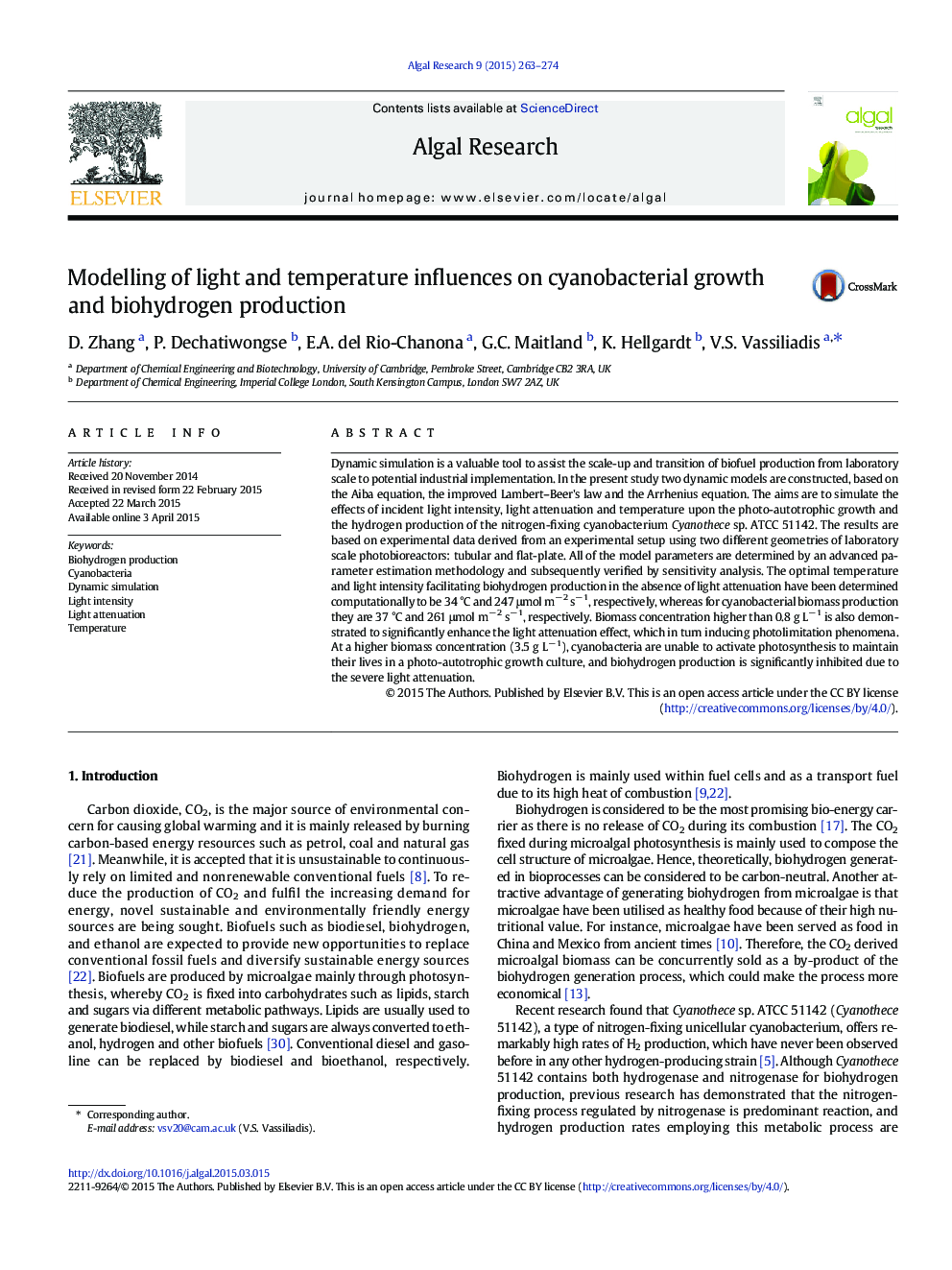| Article ID | Journal | Published Year | Pages | File Type |
|---|---|---|---|---|
| 8088181 | Algal Research | 2015 | 12 Pages |
Abstract
Dynamic simulation is a valuable tool to assist the scale-up and transition of biofuel production from laboratory scale to potential industrial implementation. In the present study two dynamic models are constructed, based on the Aiba equation, the improved Lambert-Beer's law and the Arrhenius equation. The aims are to simulate the effects of incident light intensity, light attenuation and temperature upon the photo-autotrophic growth and the hydrogen production of the nitrogen-fixing cyanobacterium Cyanothece sp. ATCC 51142. The results are based on experimental data derived from an experimental setup using two different geometries of laboratory scale photobioreactors: tubular and flat-plate. All of the model parameters are determined by an advanced parameter estimation methodology and subsequently verified by sensitivity analysis. The optimal temperature and light intensity facilitating biohydrogen production in the absence of light attenuation have been determined computationally to be 34 °C and 247 μmol mâ 2 sâ 1, respectively, whereas for cyanobacterial biomass production they are 37 °C and 261 μmol mâ 2 sâ 1, respectively. Biomass concentration higher than 0.8 g Lâ 1 is also demonstrated to significantly enhance the light attenuation effect, which in turn inducing photolimitation phenomena. At a higher biomass concentration (3.5 g Lâ 1), cyanobacteria are unable to activate photosynthesis to maintain their lives in a photo-autotrophic growth culture, and biohydrogen production is significantly inhibited due to the severe light attenuation.
Keywords
Related Topics
Physical Sciences and Engineering
Energy
Renewable Energy, Sustainability and the Environment
Authors
D. Zhang, P. Dechatiwongse, E.A. del Rio-Chanona, G.C. Maitland, K. Hellgardt, V.S. Vassiliadis,
